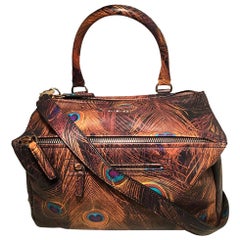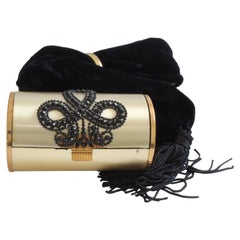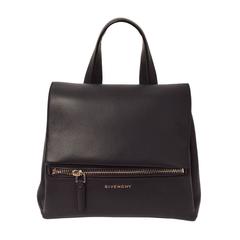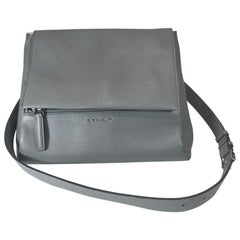Pandora Bags
21st Century and Contemporary Crossbody Bags and Messenger Bags
2010s Structured Shoulder Bags
2010s Structured Shoulder Bags
1950s American Evening Bags and Minaudières
Recent Sales
21st Century and Contemporary Italian Shoulder Bags
2010s Hobo Bags
21st Century and Contemporary Italian Shoulder Bags
21st Century and Contemporary Top Handle Bags
21st Century and Contemporary Italian Crossbody Bags and Messenger Bags
2010s Italian Belt Bags
20th Century Unknown Duffel Bags and Carry-On Bags
2010s French Shoulder Bags
2010s French Shoulder Bags
2010s French Shoulder Bags
2010s French Top Handle Bags
2010s Structured Shoulder Bags
2010s Top Handle Bags
2010s Crossbody Bags and Messenger Bags
21st Century and Contemporary Unknown Shoulder Bags
21st Century and Contemporary British Shoulder Bags
2010s Italian Top Handle Bags
2010s Italian Crossbody Bags and Messenger Bags
2010s Italian Top Handle Bags
21st Century and Contemporary French Crossbody Bags and Messenger Bags
21st Century and Contemporary Italian Structured Shoulder Bags
2010s Italian Structured Shoulder Bags
21st Century and Contemporary Italian Structured Shoulder Bags
21st Century and Contemporary French Structured Shoulder Bags
2010s Italian Crossbody Bags and Messenger Bags
21st Century and Contemporary Italian Crossbody Bags and Messenger Bags
2010s Evening Bags and Minaudières
21st Century and Contemporary Structured Shoulder Bags
2010s Italian Evening Bags and Minaudières
21st Century and Contemporary Italian Crossbody Bags and Messenger Bags
21st Century and Contemporary Top Handle Bags
2010s Italian Evening Bags and Minaudières
20th Century Top Handle Bags
2010s Crossbody Bags and Messenger Bags
21st Century and Contemporary Shoulder Bags
21st Century and Contemporary Shoulder Bags
21st Century and Contemporary Shoulder Bags
21st Century and Contemporary Tote Bags
21st Century and Contemporary Shoulder Bags
21st Century and Contemporary Tote Bags
21st Century and Contemporary Tote Bags
21st Century and Contemporary Shoulder Bags
21st Century and Contemporary Tote Bags
21st Century and Contemporary Shoulder Bags
21st Century and Contemporary Shoulder Bags
21st Century and Contemporary Italian Shoulder Bags
21st Century and Contemporary Shoulder Bags
21st Century and Contemporary Shoulder Bags
21st Century and Contemporary Shoulder Bags
21st Century and Contemporary Shoulder Bags
21st Century and Contemporary Shoulder Bags
21st Century and Contemporary Shoulder Bags
21st Century and Contemporary Shoulder Bags
21st Century and Contemporary Shoulder Bags
21st Century and Contemporary Shoulder Bags
21st Century and Contemporary Shoulder Bags
21st Century and Contemporary Shoulder Bags
People Also Browsed
1990s Italian Heels
21st Century and Contemporary Shoulder Bags
1990s French Evening Dresses and Gowns
20th Century German Skirt Suits
Early 2000s Italian Cocktail Dresses
Early 2000s French Evening Dresses and Gowns
21st Century and Contemporary Italian Boots
1980s Italian Wedding Dresses
1990s French Evening Dresses and Gowns
1990s French Suits, Outfits and Ensembles
Early 2000s Italian Blazers
1980s French Corsets
1950s French Evening Dresses and Gowns
Early 2000s Italian Top Handle Bags
2010s French Structured Shoulder Bags
1990s Italian Coats and Outerwear
Pandora Bags For Sale on 1stDibs
How Much are Pandora Bags?
Givenchy for sale on 1stDibs
Venerated French designer Hubert de Givenchy (1927–2018) made a splash with his first collection of mix-and-match separates in 1952, which launched his namesake fashion house, the clean lines and refined silhouettes of the pieces offering a contrast to the more structured shapes then dominating postwar women’s fashion. His roster of clients would eventually include Grace Kelly, Elizabeth Taylor and Jacqueline Kennedy Onassis, all of whom were drawn to the designer’s architecturally and materially simple dresses, handbags, shoes and other pieces that combined sensual femininity with elegance.
At the age of 17, Givenchy left his hometown of Beauvais, France, for Paris. There he studied drawing at the École Nationale Supérieure des Beaux-Arts and apprenticed for the houses of Jacques Fath, Robert Piguet, Lucien Lelong and Elsa Schiaparelli.
Givenchy earned his first high praise for the 1952 Bettina blouse, an embroidered, ruffle-sleeve linen shirt named for his publicist and model Bettina Graziani. The Givenchy label soon developed a following of fashion icons around the world, most notably Audrey Hepburn, who would serve as Givenchy’s muse for decades after they met in 1953. The couturier created pieces for many of her films, such as the iconic little black dress in Breakfast at Tiffany’s (1961), as well as her personal life, including her wedding dress for her 1969 marriage to Andrea Dotti.
Givenchy formed a close friendship with his idol and mentor, Spanish designer Cristóbal Balenciaga, with whom he’d popularize such pieces as the sack dress, choosing looser forms over tailored ones. Throughout the decades, Givenchy expanded his empire to include fragrances, menswear, accessories and beauty lines.
In 1988, his house was acquired by luxury conglomerate LVMH. After Givenchy retired from fashion in 1995, he became an antiques expert, working with Christie’s and the Louvre, among other institutions. The brand then saw an impressive succession of head designers and artistic directors: John Galliano was the first to arrive, followed by Alexander McQueen, Julien Macdonald, Riccardo Tisci, Clare Waight Keller and Matthew M. Williams.
Today, the Givenchy brand, with its timeless fashions, continues to be a favorite of A-listers, including Cate Blanchett, Erykah Badu, Lady Gaga and Ariana Grande.
On 1stDibs, browse a collection of vintage Givenchy evening dresses, handbags, necklaces and other clothing and accessories today.
Finding the Right Handbags And Purses for You
An integral part of fashion, handbags and purses have been indispensable accessories ever since we began to carry around personal items. Level of craftsmanship, style and shape matters — from coin purses in ancient Greece to early 20th-century opera bags and onward, handbags have evolved considerably over the years to meet our needs and desires, whether or not you happen to be prioritizing functionality over a flashy exterior.
Once, a single “It” handbag ruled each fashion season. No more. Today, lovers of vintage handbags are savvier and have a wider range of shopping options. Nevertheless, classics created by the likes of Louis Vuitton, Dior and Balenciaga still rule.
“It is not a fashion bag — it is a statement bag,” says Mightychic's Debra Kent of Hermès's widely beloved accessories. “When you carry an iconic Hermès bag — Birkin, Kelly, Constance — no one knows how long you have been into this culture or if you are a newbie. Your status is validated immediately.”
First released in 1997, Fendi's Baguette rose to fame along with Carrie Bradshaw, the Sex and the City character portrayed by Sarah Jessica Parker. Recently, the design has seen such a resurgence in popularity that Fendi has reissued it.
They are part of design history, so owning a handbag has meaning. As New York–based fashion historian Sarah C. Byrd says, “You have made the choice to invest in this piece because you understand the value of it in the past and in the future to come.”
From a 1980s Chanel black leather quilted mini buckle bag to the rare Hermès Birkin 30cm Himalayan with diamond hardware to a range of 19th-century bags, find a rich variety of vintage and designer handbags and purses spanning numerous brands on 1stDibs — seasonal “It” designation no longer needed.
- 1stDibs ExpertFebruary 22, 2021Givenchy is most famous for his chic Parisian clothes, particularly for dressing Audrey Hepburn in her Breakfast at Tiffany's gown. His collections are thought to reinterpret sophistication and elegance.





